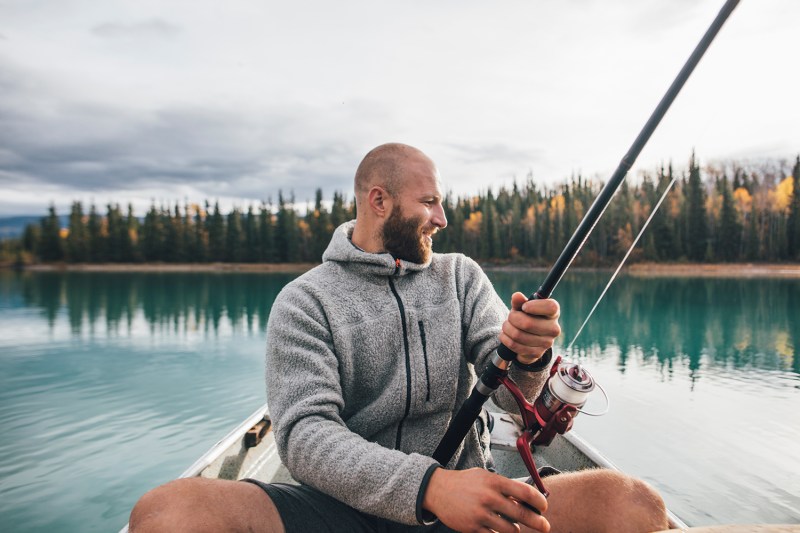
Fishing is fun regardless of your experience level. Even those who have never wet a line can find joy in a day on the water We know, it’s not about the number you catch or the size of the fish. At least half of the fun comes from being outside, listening to the water and observing the natural world doing its natural thing. But if your goal is to at least get some nibbles while you’re out, there are some fishing tips to keep in mind about how to fish.
We’ve put together a tip sheet for anglers, a basic tutorial of sorts for those who are just beginning fishing. It’s by no means an encyclopedia on the craft, but it will help you perform better while you’re out after trout, salmon, or bass.
Awareness
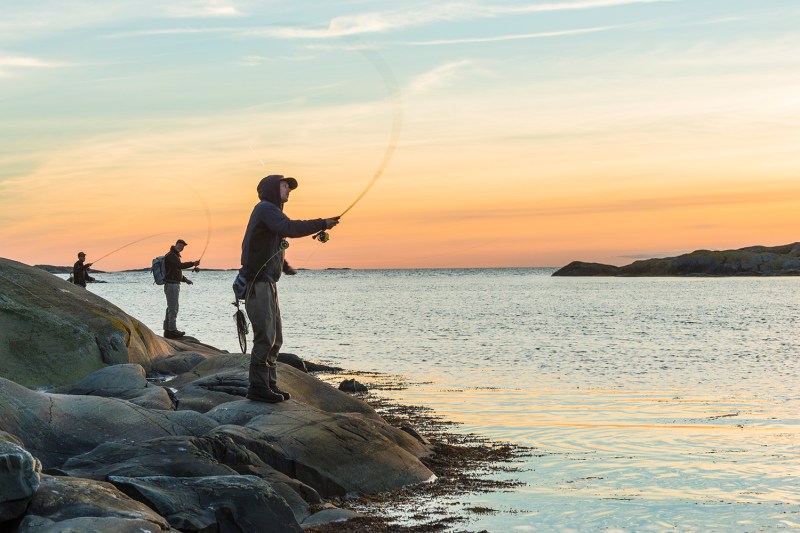
This seems obvious, but there’s a lot to it. When we are talking about awareness, we are talking about the whole picture. Keep in mind that fish tend to scare easily, so watch your noise level and always take note of your shadow (it will put fish off). Fish can often see you even when you can’t see them, so move stealthily when you can. It’s the great outdoors, no need for ear pods or phone calls (hopefully you don’t even have service) out here.
Be aware of other humans, too. There are some unwritten rules to fishing, and maintaining space is one of them. Don’t crowd your fellow fishermen. They came out for peace and quiet as well, so give them a modest bubble to work within. If you’re sharing the same stretch of river, practice the leapfrog approach to maintain said bubbles and keep from cutting in line or fishing a stretch that’s just been fished (and therefore likely not to fish as well on account of being disturbed).
Read the water

Think like a fish. Where would they hang out? In rivers and streams, look for pools behind rocks, eddies, banks, and riffles. In lakes, look for rising fish or grab a few rocks and see what bugs they might be eating subsurface. Be observant of insect hatches if you’re fly-fishing, and try to match your pattern with what’s buzzing about.
With a good pair of polarized outdoor glasses, you can actually see through the water in many cases. Look for places where fish might hold, like behind large submerged rocks or near channels where a lot of bugs and other munchies flow by for the taking. Try as best you can to allow your bait (worm, fly, spinning lure, etc.) to move naturally, whether that be through some jiggling or a nice dead drift with the current. Anytime it pulls or drags, it appears less natural and therefore, much less appetizing for most fish.
Be patient
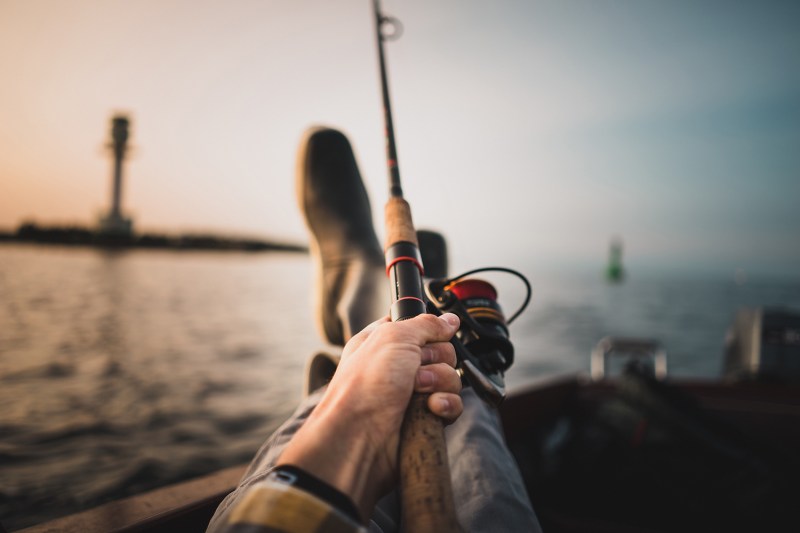
A good fishing day does not have to involve fish. Remember that Mother Nature outsmarts you all the time, especially where angling is concerned. There’s little sense in getting frustrated over the matter. You are, after all, trying to trick an animal into eating something attached to a hook.
I have been fly-fishing for almost three decades and I still remind myself to be patient. That might mean trying ten more casts to the far bank before moving upriver (I can’t tell you how many times working a single area for longer has proven effective) or simply acknowledging that fish don’t feed every hour of the day. Even when the fishing is lousy, take solace in the fact that you’re not at the office, or doing yard work, or stuck in traffic.
Practice
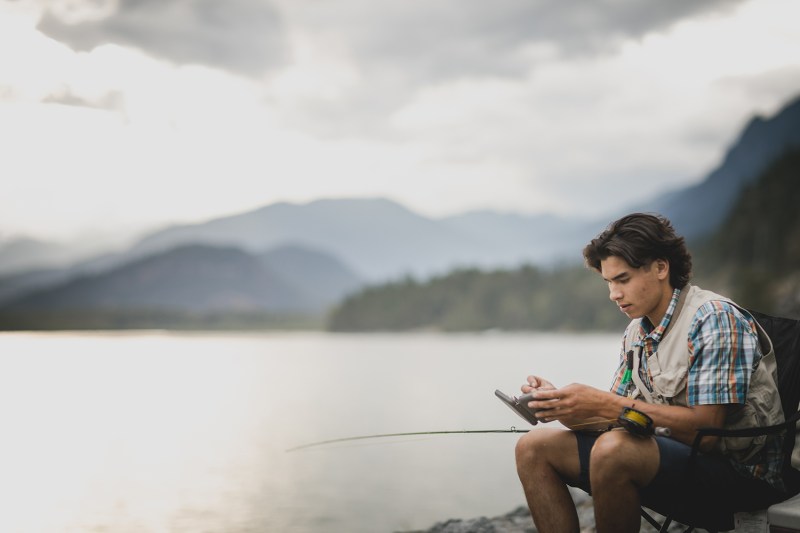
You don’t need water to practice your technique. I used to cast in my backyard or local park quite often. I would tie something without a hook that resembles a fly or lure (a little knot of twine will do) and cast it to some object representing a fish (try a frisbee). It’s a great way to get acquainted with your fishing rod and also naturalize the casting motion. After a while, you’ll find that you’re casting both farther and with greater precision.
Practice goes beyond just casting. You can fine-tune your knot-tying skills or, if you fish from a vessel, improve your paddling. There’s a physical training element to practice as well. Many great fisheries are located at altitude, so it pays to be in decent shape so you can last a full day on the water. If you’re a wader, it pays to have strong legs and a good sense of balance. They don’t seem directly related, but things like jogging and yoga will actually help your ability to fish quite a bit.
Respect the catch

If you do catch a fish, you need to handle the fish with care. Wet your hands before handling it to protect the fish’s slime coat. If you plan to release the fish; the quicker you can get the fish unhooked and back in the water, the better chance it has of survival. Don’t grab the fish by its gills or hold it vertically. Instead, cradle the fish horizontally with one hand under its belly for support.
Use needle-nose pliers to remove the hook carefully. If the hook is barbed and difficult to remove without harming the fish, cut the line close to the knot and leave the barb in. If the fish is sluggish, hold it gently in the water facing the current to allow fresh water to flow over its gills. You can also gently move the fish back and forth to help it regain strength.
Get the right gear
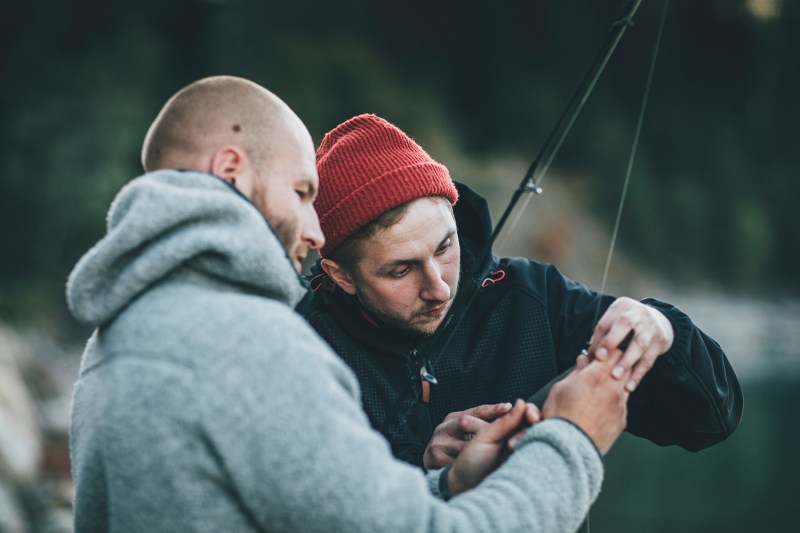
You don’t need all the bells and whistles but you should have some basic fishing gear when it comes to fishing. Clearly, you’ll need a decent fishing rod. But you’ll also want a vest, pocket knife, hat, sunglasses, and either a decent pair of waders or some water-friendly shoes for wet wading. A great tackle or fly box is a must and you would be wise to have a decent pair of forceps for removing hooks from fish mouths.
Other items we find incredibly helpful include a durable water bottle, a headlamp, and easy-to-eat snacks like energy bars. If you’re going deep into the wilderness, remember safety items like bear spray, a first aid kit, and maybe even a lighter or matches, should you get lost and need the warmth (or to signal for help). And if you’re kayaking make sure to grab the essential kayaking fishing accessories, such as the right kayak paddle.


